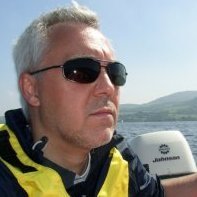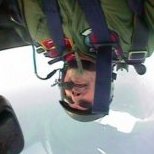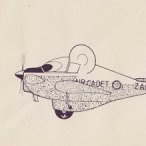

Vladan Dugaric
Members-
Posts
71 -
Joined
-
Last visited
About Vladan Dugaric
- Birthday 25/12/1965
Contact Methods
- MSN
-
Website URL
http://
-
ICQ
0
Profile Information
-
Gender
Male
-
Location
Twickenham, UK
-
Interests
Scale aircraft modelling, photography, airshows
Vladan Dugaric's Achievements

New Member (2/9)
36
Reputation
-
ESCI 1/72 F-4 family has a mix of Air Force and Navy Phantom features: * Navy main wheels * Air Force refuelling probe door scribed on spine and no Navy refuelling probe door on right side of forward fuselage (easy to scribe) * Navy catapult hooks under intakes (easy to fill on Air Force Phantom) * Air Force cockpit with right rear console and no panel to cover refuelling probe compartment for Navy Phantom, as well as Air Force stick in the rear cockpit * Short nose intake scoops (as Giorgio mentioned), some work required to make faired in long nose scoops * When boxed as F-4S, port side air intake grilles around nose wheel well are not correct (but most manufacturers reused a common part there; they need filling and new ones need to be opened forward of the old ones) * F-4S and F-4E/F slats are identical parts (they should be somewhat different; again, most manufacturers did not make them specific to S or E/F/G models), also missing wing fence for slatted models (easy to make, F-4S having a longer fence than F-4E/F) Other errors: * Exhaust flame holders have 6 instead of 7 spokes and are about half the depth they should be * Wing pylon sway braces are wrong shape * Sidewinder missiles are not very good, Sparrows need cable ducts (easy to add) * No centre fuel tank * No Navy main gear trunnion covers on the top wings (easy to make) * No Navy antenna bumps on underside of wings and intakes (easy to make) * No option for open speed brakes (most 1/72 Phantoms have them shut) * No open blow-in doors on the underside of the belly (when landing gear is down, they are always open; most 1/72 Phantoms have them shut) * Sidewinder pylons are not accurate; they should connect to inner wing pylons a bit higher and to the rear, and they should cant slighlty down; shape and size is also wrong The kit looks very similar to Fujimi Phantoms, with a number of parts changed and some simplifications. Some parts are identical. It is likely that they were both tooled by the same company around the same time in 80s, or that one is a somewhat altered copy of the other. This also applies to ESCI and Fujimi Harriers and A-7 Corsairs. Other than those issues, ESCI Phantoms have very crisp and thin panel lines, they are easy to build due to not being split into many sub-assemblies to cater for multiple versions with minimum of parts, and are good in dimensions and shape (in other words, it looks like a Phantom).
-

1/72 Hobby 2000 (Fujimi Repop) Skyhawk A/OA-4M
Vladan Dugaric replied to Uncle Dick's topic in The Rumourmonger
Also, both boxings contain all parts for a single-seater A-4M and twin-seater OA-4M, as well as a common canopy mask sheet which covers single- and twin-seater. Only decals are for the version on the box top. With aftermarket decals, either box is good for any of two versions. Vladan -

LTV A-7E Corsair II - Italeri 1/72
Vladan Dugaric replied to AntoineG's topic in Work in Progress - Aircraft
AIM-9B/D/G/H have front fins with swept trailing edges. Both Hasegawa and Italeri are incorrect, due to molding limitations (if all 4 fins have swept trailing edges, two fins that are perpendicular to the split between mold halves would be stuck; that is why some manufacturers make two fins separate parts, while the remaining two, parallel to the split between mold halves, are integral to the missile). Academy's new 1/72 F-14A has AIM-9D missiles with two fins correct (with swept trailing edges) and two incorrect (with straight trailing edges), due to the same molding limitations (fins that are parallel to the mold split plane are correct, fins that are perpendicular to mold split plane are incorrect). Italeri tried to mold the blunt front of the fins, but it is too pronounced. Hasegawa has the straight leading edge going into missile body, which is not correct. Also, Italeri missile looks like B model, as its nose is not tapered but straight, with hemispherical seeker head. Hasegawa missile looks like D/G/H, with tapered nose. As fins are too thick anyway, it would be best to cut them off and make correct fins from card. Good pictures of AIM-7D can be found on Zactomodels website: https://www.zactomodels.com/html/AIM-9/Sidewinders.htm Vladan -

B58 Hustler - Finished 10/05/20
Vladan Dugaric replied to neil5208's topic in Work in Progress - Aircraft
Be advised that B-58 had early 24-petal nozzle with long petals. F-4A/B/C/D/N had early 24-petal nozzle with short petals. F-4E/F/J/S/EJ had late 16-petal nozzle with long petals. Nozzle in your photo is late F-4 16-petal model. Neither of the two Aires (early/late) exhausts is accurate for B-58. Italeri kit nozzle has 20 petals, which is also incorrect. Vladan -

1/18 P51C Mustang ‘Lopes Hope the 3rd’
Vladan Dugaric replied to airscale's topic in Work in Progress - Aircraft
Well, Peter's login for this forum is airscale, so that should give a hint -
Before you paint the windshield, you should be aware that Skyraider did not have metal strips between the side panels and the armoured glass. They were butt-joined, and there was sealant between the panes, but no frames. The correct way to represent this would be to scribe thin lines where the frames would be, then use gray wash in them. Also, the centre armoured glass panel is too narrow on Italeri's model, as well as having a curved armoured glass (it should be flat). The outer sides of the framing are approximately the correct width for the centre panel (the inner lines should be sanded and polished). There are good pictures and drawings on Tommy's website: http://tailhooktopics.blogspot.com/2015/11/whats-under-ad-skyraider-canopy.html Vladan
-
It says B-25(something) Mitchell in text above the photo. It also looks like a B-25.
-
It is the same kit as the original J. ZM said that they will not modify it, but the upcoming E will have corrected hips. Vladan
- 223 replies
-
- Zoukei-Mura
- 1/48
-
(and 1 more)
Tagged with:
-
Guilty as charged!
-
Aires just repackaged their existing late J79 set for F-4J/E/EJ/F/G/S. The nozzles for F-4B/C/D are shorter and their petals are not quite the same as on B-58. B-58 had longer nozzles with 24 petals. I am sure someone (Tailspin Turtle?) knows a lot more about this than I do. Vladan
-
Pay attention to the engine nozzle exhaust petals. The resin set has 16 petals per nozzle (which is late, long nozzle J79). B-58 had early J79 with short nozzle with 24 petals per nozzle. Vladan
-

ICM 1/48 Spitfire Mk.IX 'Beer Delivery'
Vladan Dugaric replied to BP85's topic in Work in Progress - Aircraft
You may want to remove the aluminium dry brushing from the propeller, as Spitfire Mk.IX had a wooden Rotol propeller, which would not show bare metal from wear. -

ICM 1/48 Spitfire Mk.IX 'Beer Delivery'
Vladan Dugaric replied to BP85's topic in Work in Progress - Aircraft
Just a note: Spitfire Mk.IX did not have head rest cushion on the armour plate behind seat; you should remove it if it is not too late. -
Tamiya acrylic paints are lacquers; they dry by evaporation of solvent, so it is safe to let some of the solvent evaporate. If too much thinner evaporates, you can add more thinner, as it will dissolve even fully dried paint. Enamel paints dry and cure (chemically react with oxygen from air), and cured paint is then not soluble in the thinner in the paint; that makes the paint somewhat or entirely unusable, depending how much of it cured, when adding thinner to gloopy paint will not dissolve it any more.






